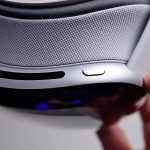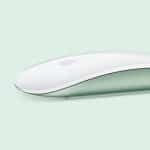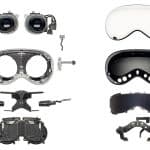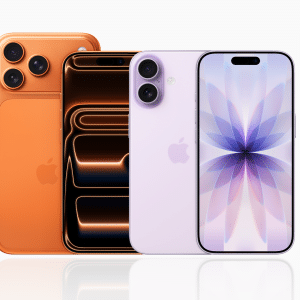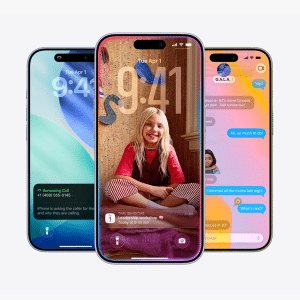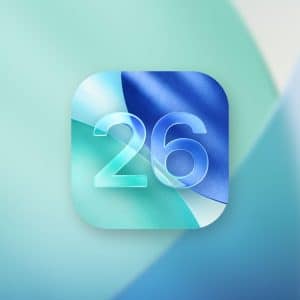Apple’s Vision Pro headset, currently powered by the M2 chip, has set a high standard for augmented reality headsets. However, the potential inclusion of an M5 chip would elevate performance to a new level. The M5 chip is expected to deliver faster processing speeds, advanced graphics rendering, and improved power efficiency, making it ideally suited for the resource-intensive demands of augmented reality.
Enhanced Processing Power for Seamless AR
The Apple Vision Pro M5 chip is rumored to bring a substantial boost in processing power, essential for the real-time calculations required in AR environments. This increase in performance will make complex AR applications feel smoother and more lifelike, as the M5 chip handles both high-level calculations and intricate graphical elements seamlessly. From interactive gaming to professional applications, the M5’s enhanced power will allow users to dive into immersive experiences without interruptions or delays.
With faster processing speeds, Apple can introduce more advanced AR applications and expand the Vision Pro’s appeal across industries such as healthcare, education, and design. The M5 chip’s robust capabilities ensure that users will experience minimal latency, a key improvement for AR functionality that relies on instant user feedback and reaction.
Superior Graphics and Visual Fidelity
The M5 chip is also expected to include advanced GPU cores, supporting higher-resolution graphics and smoother frame rates. As AR relies heavily on realistic visualizations to create immersive experiences, the M5’s GPU upgrades will enable Apple to push the boundaries of visual quality. Users will enjoy clearer details, richer textures, and a more immersive feel that brings virtual elements closer to real-life visuals.
For applications requiring intense graphical performance, such as 3D modeling or complex simulations, the M5 chip will make a noticeable difference. Creators and developers working in high-resolution environments will benefit from these improvements, as they will be able to render and interact with complex models in real-time, giving the Vision Pro an edge over other devices in the AR market.
Improved Power Efficiency
Battery life is crucial for a wearable device like the Vision Pro, where users expect uninterrupted usage throughout the day. The M5 chip’s efficiency gains could provide users with longer battery life while supporting demanding applications. By balancing high performance with optimized power consumption, Apple could enable users to engage in longer AR sessions, whether for work or play, without frequent recharging.
This power efficiency aligns with Apple’s commitment to sustainable technology, potentially extending the device’s longevity and decreasing the need for battery-intensive support features. An M5-powered Vision Pro could therefore offer a compelling mix of powerful, sustained performance and practical battery management.
Apple Vision Pro’s Expanding Role in Augmented Reality
The addition of the Apple Vision Pro M5 chip would signify Apple’s commitment to advancing its Vision Pro line as a frontrunner in augmented reality. With each new model, Apple continues to shape the way users interact with digital elements overlaid on their physical environments, blurring the line between the virtual and the real.
Beyond Entertainment: Practical Applications of the Vision Pro M5 Chip
While AR gaming and entertainment remain popular, Apple’s Vision Pro is set to excel in various professional sectors, thanks to the power brought by the M5 chip. Medical professionals, architects, and educators, for instance, can leverage the advanced AR capabilities of the Vision Pro to visualize complex data, simulate real-world scenarios, and facilitate learning in immersive environments.
- Healthcare Applications: Surgeons and medical students can use the Vision Pro for intricate 3D modeling of human anatomy, creating safer and more effective training environments.
- Architectural and Design Work: For architects, the M5 chip’s rendering capabilities allow users to interact with life-size building models, evaluating design choices in a simulated physical space.
- Education and Training: Teachers and trainers can create interactive lessons, giving students hands-on learning experiences that are more engaging than traditional methods.
With the Vision Pro’s expanded capacity powered by the M5 chip, Apple could redefine the role of AR as a practical tool for productivity and learning.
Apple is known for its focus on user experience, and the Vision Pro with the M5 chip could take personalization to the next level. Through the use of machine learning and user data, Apple could create tailored AR experiences that adapt to individual needs and preferences. Whether through customized content recommendations, unique user interfaces, or interactive guidance based on behavior, the M5 chip’s processing power supports Apple’s commitment to providing users with a meaningful, intuitive experience.
This personalization will also help Apple maintain its competitive edge in the AR market by ensuring that users feel understood and supported in their unique ways of interacting with the device.
The Competitive Advantage of the M5 Chip in the AR Market
With competitors like Meta and Google making strides in AR and VR, the Apple Vision Pro M5 chip positions Apple to further differentiate itself in this market. While the competition focuses on creating versatile headsets, Apple’s Vision Pro focuses on performance, integration, and an optimized experience that leverages Apple’s proprietary technology.
A major advantage of the Vision Pro with an M5 chip is its seamless integration with other Apple devices. Apple’s network enables Vision Pro users to sync content across their iPhone, iPad, and Mac, making it easy to share, transfer, and experience content on any platform. With the M5 chip, data transfer speeds and compatibility will be even better, allowing for an increasingly seamless user experience.
Users can start a project on their MacBook, refine it on their Vision Pro, and share it on an iPad, enjoying a cohesive experience across all devices. This level of integration strengthens Apple’s hold in the AR space, as no other brand currently offers such a highly interconnected network.
The Vision Pro’s AR capabilities are only part of its potential, as the device becomes even more powerful when connected within Apple’s network. Through features like Handoff, users will be able to move between devices effortlessly. With the M5 chip, real-time updates and cross-device compatibility will ensure that these interactions are smooth and glitch-free, enhancing the overall functionality of Apple’s network.
Moreover, with the M5 chip’s advancements, developers will be able to design applications that take advantage of Apple’s ARKit, creating unique AR experiences that seamlessly fit into Apple’s suite of products.
Future Outlook: Apple’s Vision Pro in the World of Spatial Computing
Apple’s Vision Pro, enhanced by the M5 chip, represents a significant milestone for the company’s journey in AR and spatial computing. As Apple continues to explore the boundaries of spatial technology, the Vision Pro is poised to become a cornerstone device, delivering experiences that go beyond what traditional devices can offer.
The addition of the M5 chip allows Apple to expand the Vision Pro’s capabilities over time. As Apple continues to release software updates, users may benefit from new features that are enabled by the chip’s power, whether through more advanced AR applications or enhanced compatibility with emerging technologies. The M5 chip could also set the stage for potential integration with future developments in AI, supporting complex data processing tasks and more refined user interactions.
As AR technology becomes more accessible and practical, Apple’s Vision Pro with the M5 chip could play a crucial role in mainstream AR adoption. By focusing on seamless integration, high performance, and user-friendly design, Apple makes AR technology more approachable for the average consumer. This accessibility not only reinforces Apple’s commitment to innovation but also establishes the Vision Pro as a leading product in the world of AR.
Apple Vision Pro M5 Chip Marks a New Era in AR
The rumored Apple Vision Pro M5 chip sets high expectations for the future of augmented reality. With enhanced processing power, superior graphics, and power efficiency, the Vision Pro with the M5 chip is likely to redefine what users can achieve with an AR device. Apple’s focus on providing a cohesive experience within its network, paired with the M5 chip’s performance, creates a device that is both powerful and practical, designed to meet the needs of diverse users and industries.
As Apple advances its AR technology, the Vision Pro with an M5 chip represents more than just a new product—it’s a strategic move that reinforces Apple’s influence in the AR space and prepares users for a future where augmented reality plays a pivotal role in both professional and personal settings.



